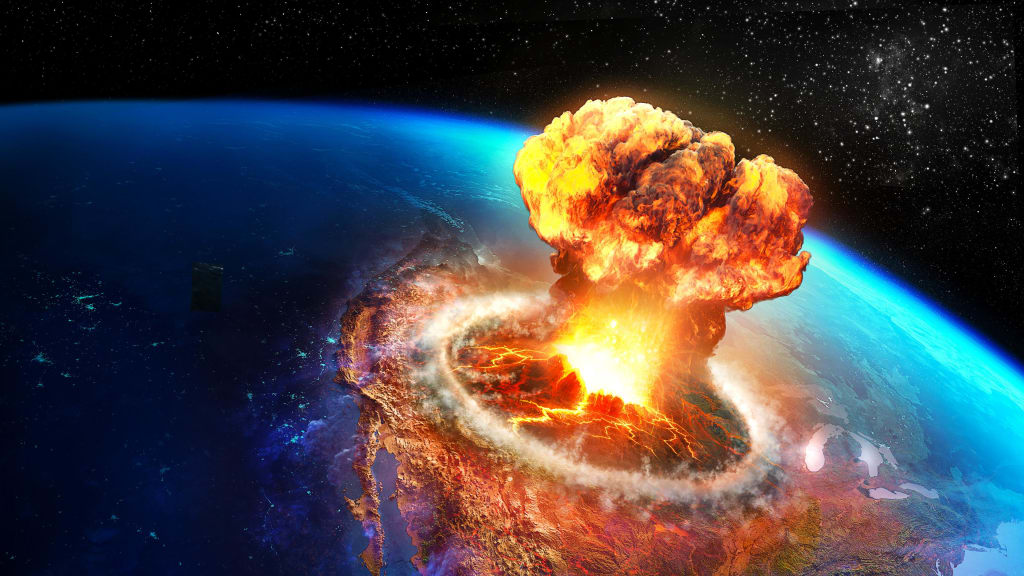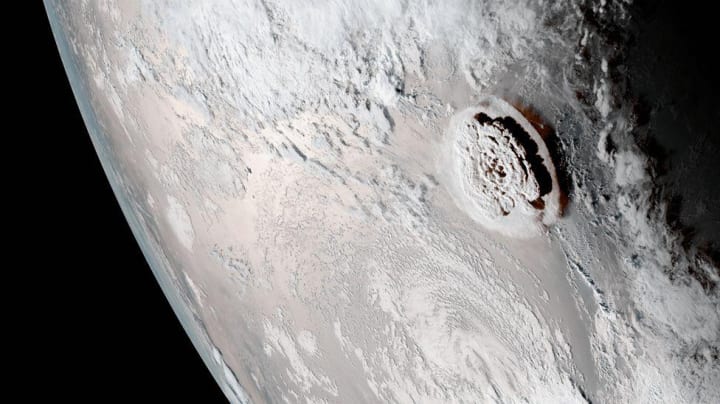The temperature in 2022 is high!
Scarier still, the future or a major volcanic eruption?

The year 2022 is very hot, allowing people to experience the effects of global warming. Although the extreme heat has brought many disasters to people, such as wildfires and droughts. But more terrible is yet to come, that is, some scientists warned that warming can also intensify volcanic eruptions. There are even scientists who warn that large volcanic eruptions may occur in the future, and this will have terrible consequences for humanity.
Climate change could increase volcanic eruptions
A warming planet due to human-induced climate change could lead to an increase in volcanic activity. Although the relationship between climate and volcanic activity may seem counter-intuitive, it has been shown that the pressure exerted on the Earth's crust by thick glaciers - what geologists call "surface loading" - has a significant impact on the flow of magma below the surface. This correlation affects the magma flow and the gaps and interstices in the Earth's magma flow to the surface, as well as how much magma the crust can hold.
An article published in the Journal of Geology suggests that the warming of the Earth due to human-induced climate change may be leading to increased volcanic activity. The team examined the geological record of volcanic eruptions in Iceland between 5,500 and 4,500 years ago - a cooler period in Earth's history, but still not the coldest ice age. The extent of volcanic activity can be seen by looking at records of ash that fell over Europe and onto peat bogs and lakes. Comparing the volcanic record with glacier cover, the team found that the number of eruptions declined significantly as the climate cooled and ice cover increased. The eruptions that did occur also tended to be smaller in size.
In contrast, the team found that as the climate warmed and glaciers melted, volcanic eruptions became more frequent. When glaciers are removed, surface pressure decreases, and magma is more likely to spread to the surface and erupt as a result. Previous studies have estimated a 2-6 fold increase in global terrestrial volcanism in areas where glaciers have been melting for 12,000 to 7,000 years. 2016 researchers found clues indicating increased volcanic activity after Iceland, continental Europe, and eastern California experienced a period of rapid ice retreat. Rapid glacial melting leads to the release of large amounts of magma. The ice exerts pressure on the Earth's crust, causing the magma to stay in place. But when the ice retreats, the pressure decreases, causing the magma to rise to the surface.

Climate change may also make future large volcanic eruptions more destructive
A warmer atmosphere will cause plumes of gas and dust from large volcanic eruptions to rise higher, and aerosols to spread more quickly from the tropics to higher latitudes. The combined effect would block more sunlight and lead to temporary cooling, amplifying the effect by 15 percent. The study also noted that cooling could increase further as the ocean warms. However, the team also studied small and medium-sized volcanic eruptions and found that climate change could reduce the cooling effect by as much as 75 percent in the high-end emissions scenario. As the atmosphere warms, the top of the troposphere (the boundary between the troposphere and stratosphere) is expected to rise, making it more difficult for the plume to reach the upper atmosphere and circulate globally.
Climate change will also accelerate the spread of volcanic material (in the form of small, shiny droplets called volcanic sulfate aerosols) - sending them to higher latitudes. For large eruptions, the combined effect will result in a haze from volcanic aerosols blocking more sunlight from reaching the Earth's surface. This could eventually amplify the temporary cooling effect caused by volcanic eruptions. The study authors add that as the climate continues to warm, large eruptions will have a greater impact. Conversely, the cooling effect of small and medium-sized eruptions could be reduced by as much as 75 percent.
When Mount Pinatubo erupted in the Philippines in 1991, the effects were felt around the world. The plume from the eruption reached more than 30 kilometers into the sky, creating a global haze that caused global temperatures to drop by 0.5 degrees C in 1992. By comparison, human activity has increased global temperatures by more than 1 degree Celsius since 1850. However, the effects of volcanic aerosols last only a year or two, while anthropocentric greenhouse gases can affect the climate for centuries.
Major Volcanic Eruptions in Tonga
A large volcanic eruption in the future perhaps? Study finds 1 in 6 chance of major volcanic eruption this century
In January 2022, a massive eruption occurred at Tonga volcano in the South Pacific, the largest since the 1991 eruption of Mount Pinatubo in the Philippines and the largest explosion recorded by instruments. 2022's Tonga eruption was a wake-up call for humanity. According to the latest data from ice cores, the probability of an eruption of magnitude 7 (10 or 100 times larger than Tonga) or greater this century is 1 in 6. In the past, eruptions of this magnitude have led to abrupt climate change and civilization collapse, and have been associated with the rise of epidemics. As history has shown, this would have dire consequences for humanity
A super volcanic eruption of magnitude 7 or greater would likely threaten human civilization - the Yellowstone supervolcano has erupted three times in the last 2.1 million years, most recently 640,000 years ago. A Yellowstone eruption would be unlike anything humanity has ever experienced. It would begin with increasingly powerful earthquakes, which would indicate that magma beneath Yellowstone is rushing to the surface. And then the magma would burst through the ground in a huge eruption, releasing very large amounts of toxic gases into the air. And this would last for several days, and then Yellowstone would be buried in lava within a 40-mile radius.
Modeling by meteorologists found that if the eruption occurred in the summer, the released aerosols could spread globally. In the short term, global average temperatures could plummet - and not return to normal for several years - as the toxic smoke blocks sunlight. Rainfall would plummet, which could trigger the disappearance of tropical rainforests. A major eruption of a super-volcano like Yellowstone represents an existential risk - as it could cause a super-catastrophe of global destruction or even human extinction.
In short, if a future supervolcano eruption of magnitude 7 or greater does occur, the impact on the world will be enormous. So I hope that such a large eruption will not happen.
About the Creator
Sue Torres
Is there any other reason to live to change the world?






Comments
There are no comments for this story
Be the first to respond and start the conversation.